There's a reason the treadmill is jokingly referred to as the "dreadmill" in the running community. It can be boring, tedious and, with all that effort, you don't even go anywhere.
But on brutally cold days and in between packed holiday schedules, it's often an evil necessity for wintertime runners. Whether you're jumping on the New Year's bandwagon or have been faithfully running for years, there's a good chance you'll find yourself on a treadmill at least once in the next few months.
But is it possible you're making treadmill running even worse with your form?
David Siik, creator of Equinox's Precision Running program, devotes an entire chapter to common treadmill mistakes in his book "The Ultimate Treadmill Workout."
Read on to see if you're guilty of any of these. And, if you're looking for a treadmill for your home gym, consider one of these eight.
Running Too Close to the Front of the Treadmill
1 of 7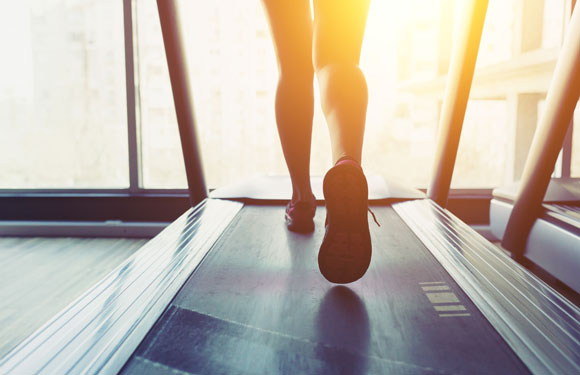
If you're practically on top of your TV monitor while running on the treadmill, you're too close to the front.
According to Siik, many runners feel safer and more in control on the treadmill when they hug the front, but it's causing serious damage to your form.
Running up against the monitor limits your range of motion and prevents you from running with your natural stride. In order to fit into the space, you will also swing your arms in a choppy motion, which creates tension in the back, shoulders and neck.
Always try and run in the middle of the belt, a few inches back from the front.
Find a
race.Looking Down at the Belt
2 of 7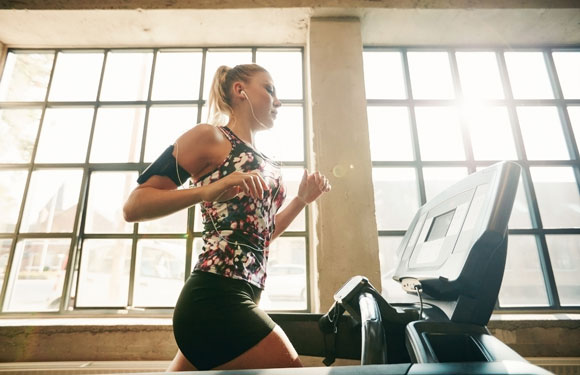
This is an easy one, but don't look down at the moving belt. Looking down will strain your neck, create tension in your shoulders and probably cause you to feel dizzy and disoriented.
It's also important to look directly in front of you rather than around the room. Maintaining your focus will help you avoid taking a wrong step.
Find a
race.Always Landing on Your Heel
3 of 7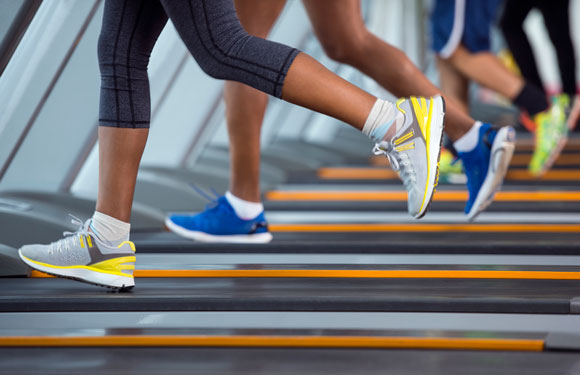
Though Siik acknowledges that landing on your heel is natural and efficient in some running scenarios, when sprinting on the treadmill or doing any type of interval speedwork, you should try to balance heel strikes with forefoot strikes.
Forefoot strikes mean landing on the upper portion of your foot. Forefoot strikes will reduce the shock and impact that your knees are absorbing from the quicker movement.
Find a
race.Purposefully Changing Your Stride
4 of 7
With a belt constantly moving beneath you, it's easy to overstride on treadmills, or in other words, to unnaturally lengthen your stride to match the pace of the belt. Instead, your feet should be landing as close to underneath you as possible.
When upping your incline, it is especially important to take smaller steps in order to protect your knees, hip and lower back from the added strain.
Find a
race.Settling Back on Your Hips
5 of 7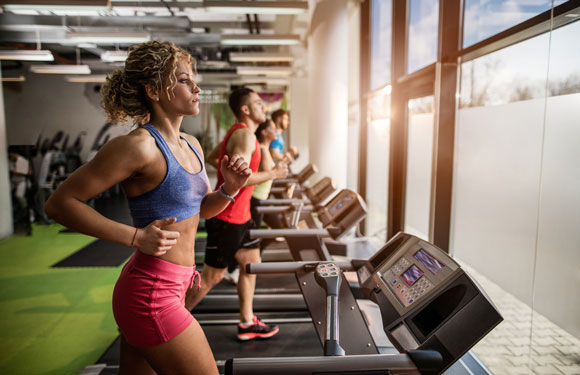
While running on the treadmill, lean slightly forward so that you're engaging the muscles of the back and core to stabilize yourself and absorb shock. Even though you are technically stationary, your posture should be the same as if you were moving forward. Stacking your torso directly over your hips can create spinal compression and other back pain.
Find a
race.Watching the Big Screens
6 of 7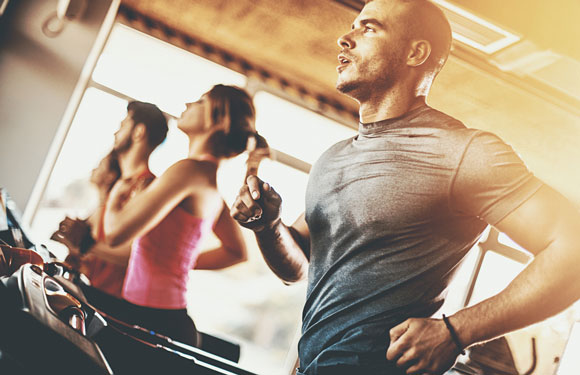
If you need to watch TV to make the time pass, stick to your individual monitor. Watching the gym's big screens (and leaning your head slightly back to do so) will lead to a stiff neck the next day.
You are designed to look out and just a little bit down while running. This means eye line should be at the top of your monitor, which will keep your head in just the right position.
Find a
race.Get ACTIVE on the Go


Couch to 5K®
The best way to get new runners off the couch and across the finish line of their first 5K.
Available for iOS | Android






Discuss This Article